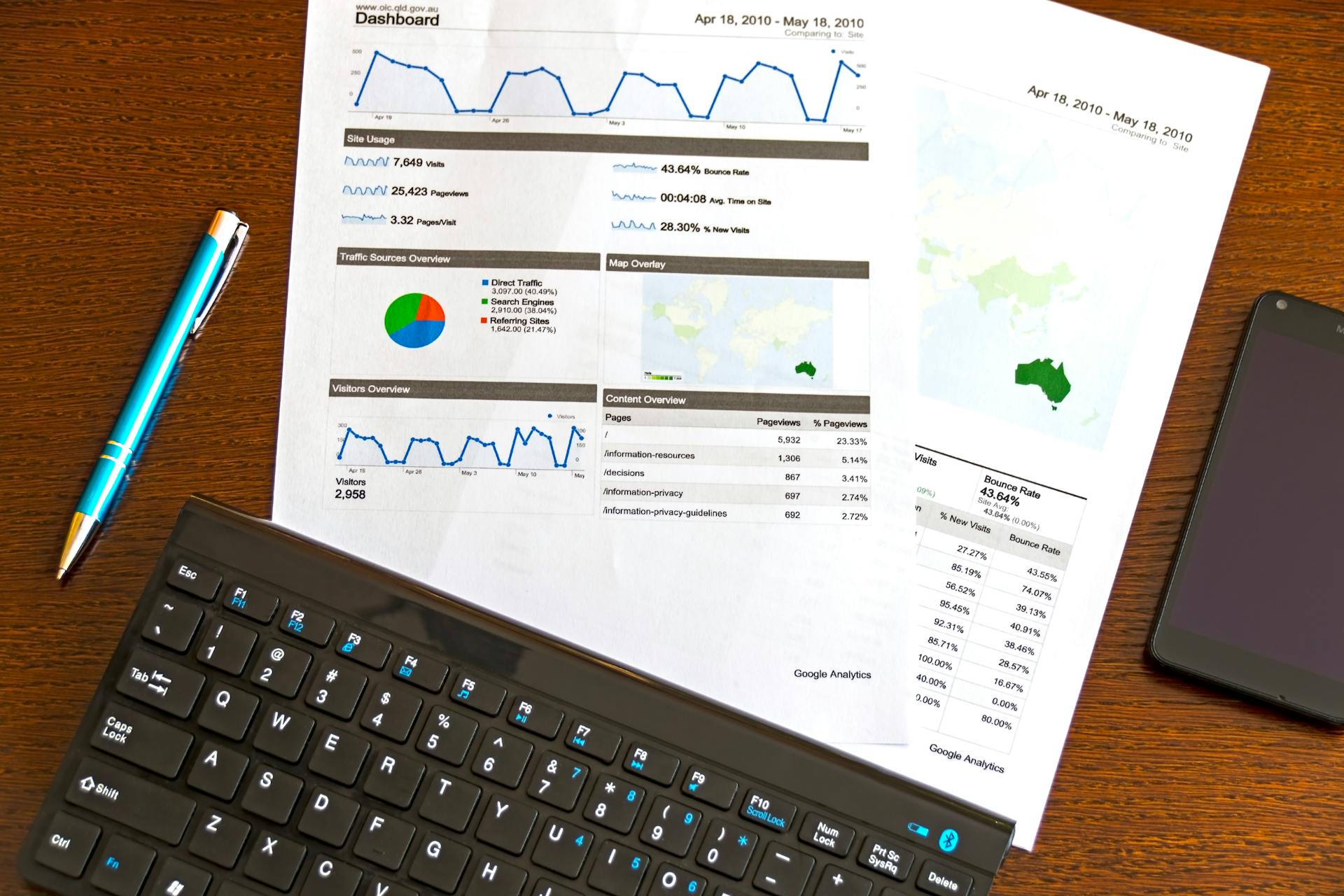The future of data analytics is on the cusp of a revolutionary transformation, driven by rapid advancements in Artificial Intelligence (AI) and Machine Learning (ML) technologies. In this era of big data, businesses, industries, and researchers are harnessing the power of AI and ML to unlock unprecedented insights from vast datasets. This fusion of cutting-edge technologies promises to reshape how we analyze, interpret, and utilize data in the coming years.
Data analytics has evolved from being a mere business tool to becoming a cornerstone of decision-making processes across various industries and domains. Major tech giants like Google, Amazon, and Microsoft have invested heavily in developing advanced analytics platforms, making data analytics more accessible and powerful than ever before.
Organizations of all sizes and sectors increasingly rely on data analytics to gain a competitive edge. From e-commerce companies optimizing customer experiences through recommendation algorithms to healthcare institutions using predictive analytics for patient care, the applications of data analytics are vast and diverse.
The current state of data analytics is also marked by the convergence of data sources. The proliferation of Internet of Things (IoT) devices, social media platforms, and sensors has led to an explosion in data generation. This wealth of data, often referred to as big data, has necessitated the use of advanced analytics techniques, including AI and machine learning, to extract meaningful insights.
Historical Evolution
The historical evolution of data analytics provides valuable insights into the progression of techniques and methodologies used to analyze data throughout human history. From rudimentary methods employed in ancient civilizations to the sophisticated tools and technologies of the modern era, this historical context helps us appreciate the significant advancements that have shaped the field of data analytics.
In the early stages of human civilization, data analysis was primitive, relying on basic arithmetic and manual calculations to derive insights from limited datasets. Ancient civilizations, such as the Babylonians and Egyptians, used data analysis techniques for purposes like:
- Tracking agricultural yields
- Predicting astronomical events
- Managing resources
The Industrial Revolution marked a turning point in data analysis, with the introduction of mechanized data processing tools like punch cards and mechanical calculators. These innovations significantly improved the speed and accuracy of data manipulation, enabling the emergence of early statistical techniques.
The mid-20th century saw the rise of modern statistics and the development of electronic computers, which revolutionized data analysis. Pioneers like John Tukey and Norbert Wiener laid the foundation for statistical methods, while the advent of computers made it possible to process and analyze larger datasets more efficiently. This era also saw the emergence of business intelligence tools for decision support.
With the growth of the internet and the digital age, data analytics expanded exponentially. The 21st century witnessed the rise of big data, where organizations began collecting vast amounts of data from various sources. This led to the development of:
- Data warehousing
- Data mining
- Predictive analytics techniques
These advancements enabled businesses to gain deeper insights into customer behavior and trends, setting the stage for the current data-driven landscape.
The Rise of AI and Machine Learning
AI and Machine Learning are revolutionizing the field of data analytics by introducing automation, predictive capabilities, and advanced pattern recognition. Here’s a more detailed explanation of their role in data analytics:
Automation of Data Analysis
AI and ML algorithms can automatically process and analyze massive datasets at incredible speeds. They can handle repetitive tasks such as data cleaning, transformation, and basic analysis without human intervention. This automation not only saves time but also reduces the likelihood of human error, allowing data scientists and analysts to focus on more complex and strategic tasks.
Predictive Analytics
One of the most significant contributions of AI and ML to data analytics is predictive modeling. Machine learning models can learn from historical data to make predictions about future events or outcomes. For instance:
- Businesses can use predictive analytics to forecast sales
- Financial institutions can detect anomalies in transactions
- Manufacturing companies can predict equipment failures
These predictive capabilities enable organizations to be proactive rather than reactive, leading to better decision-making and resource allocation.
Pattern Recognition
ML algorithms excel at identifying complex patterns and trends in data that might be too subtle or numerous for humans to notice. This is especially valuable for:
- Customer behavior analysis
- Fraud detection
- Anomaly detection in various domains
By uncovering hidden patterns, organizations can gain deeper insights into their operations, customers, and market trends.
Personalization
AI-powered recommendation systems are used extensively in e-commerce, entertainment, and content platforms. These systems analyze user behavior and preferences to provide:
- Personalized product recommendations
- Content suggestions
- Targeted advertising
This level of personalization enhances user engagement and satisfaction, leading to improved customer retention and increased revenue.
Natural Language Processing (NLP)
NLP is a subset of AI that focuses on understanding and processing human language. It is crucial in:
- Sentiment analysis
- Chatbots
- Text mining for extracting valuable insights from unstructured text data
NLP enables organizations to analyze customer reviews, social media posts, and news articles, providing a deeper understanding of public opinion and market trends.
Emerging Trends
Emerging trends in data analytics are shaping the future of how organizations leverage data for informed decision-making and strategy development. These trends represent a response to the growing complexity and volume of data available in the digital age, encompassing various aspects of data analytics, from technology to ethics.
Explainability and Transparency in AI Models
As AI and machine learning models become increasingly sophisticated, there is a growing need to understand how these models arrive at their decisions. Explainability is crucial not only for compliance and ethical reasons but also for building trust in AI systems. Organizations are investing in research and tools that make AI more interpretable, ensuring that the decision-making processes are more accessible and comprehensible to humans.
Key aspects of this trend include:
- Development of interpretable AI models
- Creation of tools to visualize and explain AI decision-making processes
- Integration of explainable AI into existing analytics workflows
Edge Computing and Real-time Analytics
With the proliferation of Internet of Things (IoT) devices and the need for instant insights, data analytics is moving closer to the data source. Edge computing allows organizations to process data at or near the data source, reducing latency and enabling real-time decision-making. This trend is especially vital in fields like:
- Autonomous vehicles
- Healthcare
- Manufacturing
In these industries, split-second decisions can have a profound impact. Edge computing and real-time analytics enable:
- Faster response times
- Reduced network congestion
- Enhanced data privacy and security
Data Visualization and User-friendly Dashboards
As data becomes more complex, the need for clear and intuitive data visualization grows. Advanced data visualization techniques and user-friendly dashboards are becoming essential tools for communicating insights effectively. This trend focuses on:
- Interactive and customizable dashboards
- Real-time data visualization
- Integration of AI-powered insights into visual representations
By making data more accessible and understandable, organizations can democratize data-driven decision-making across all levels of the company.
Future Applications
The future applications of data analytics, powered by AI and machine learning, are expected to make significant advancements and have a profound impact across various domains and industries in the years to come. These applications represent cutting-edge uses of data analytics techniques and technologies to solve complex problems, make informed decisions, and drive innovation.
Healthcare and Predictive Medicine
Data analytics can revolutionize healthcare by analyzing patient data to predict diseases, optimize treatment plans, and enhance patient outcomes. Future applications include:
- AI-driven diagnostics for early disease detection
- Personalized medicine tailored to individual genetic profiles
- Real-time health monitoring through wearable devices and IoT sensors
- Predictive models for epidemic outbreaks and resource allocation
These advancements have the potential to significantly improve patient care, reduce healthcare costs, and save lives.
Financial Services and Risk Management
In the financial sector, data analytics is used to detect fraudulent transactions, assess credit risks, and optimize investment portfolios. Future applications may include:
- More sophisticated fraud detection algorithms using AI and machine learning
- Automated financial advising and robo-advisors
- Real-time market predictions and algorithmic trading
- Advanced risk assessment models for insurance and lending
These applications will enhance financial security, improve investment strategies, and provide more personalized financial services.
Manufacturing and Supply Chain Optimization
Data analytics can optimize production processes, reduce downtime, and enhance supply chain efficiency. Future applications include:
- Predictive maintenance to prevent equipment failures
- Demand forecasting for optimal inventory management
- Autonomous production systems with real-time quality control
- End-to-end supply chain visibility and optimization
These advancements will lead to increased productivity, reduced waste, and more resilient supply chains.
Autonomous Vehicles and Transportation
Self-driving cars and smart transportation systems rely on data analytics for real-time decision-making. Future applications may involve:
- Improved route planning and traffic management
- Enhanced safety features through predictive analytics
- Optimization of public transportation systems
- Integration of autonomous vehicles with smart city infrastructure
These applications will revolutionize transportation, making it safer, more efficient, and environmentally friendly.
Challenges and Ethical Considerations
As we navigate the evolving landscape of data analytics propelled by AI and Machine Learning, a host of challenges and concerns emerge that demand careful consideration:
Data Security and Privacy
With the increasing volume and sensitivity of data being analyzed, safeguarding against unauthorized access and data breaches becomes a critical priority. Organizations must implement robust security measures and comply with data protection regulations to maintain user trust and protect sensitive information.
Algorithmic Bias and Responsible AI Development
The inherent risk of bias in AI models raises ethical concerns, as algorithms may inadvertently perpetuate and amplify existing societal prejudices. Addressing this challenge requires:
- Diverse and representative training data
- Regular audits of AI models for bias
- Ethical guidelines for AI development and deployment
Skill Gaps and the Need for Continuous Learning
The rapid advancement of data analytics technologies has created a widening skill gap in the workforce. To address this challenge:
- Organizations must invest in training and upskilling programs
- Educational institutions should update curricula to align with industry needs
- Professionals must commit to lifelong learning to stay relevant
Data Governance and Compliance
Navigating the complex regulatory frameworks surrounding data usage and storage poses significant challenges. Organizations must:
- Develop comprehensive data governance policies
- Ensure compliance with regulations like GDPR and CCPA
- Maintain transparency in data collection and usage practices
Balancing Innovation and Ethical Considerations
Striking a balance between pushing the boundaries of data analytics and ensuring responsible use is essential. This involves:
- Establishing ethical guidelines for data analytics and AI
- Fostering a culture of responsible innovation
- Engaging in ongoing dialogue with stakeholders about the implications of new technologies
Redefining the Analytics Workforce
The future of data analytics is reshaping the workforce, creating new roles and demanding new skills. Here’s how the analytics workforce is evolving:
Evolution of Data-related Roles
Traditional data roles are expanding and new positions are emerging:
- Data Scientists are now expected to have a blend of statistical, programming, and business acumen
- AI Engineers focus on developing and implementing AI solutions
- Data Ethicists ensure responsible use of data and AI
- Machine Learning Operations (MLOps) specialists manage the deployment and maintenance of ML models
Importance of Communication and Collaboration
As data becomes central to decision-making across organizations, the ability to communicate insights effectively is crucial:
- Data storytelling skills are increasingly valued
- Cross-functional collaboration between data teams and other departments is essential
- The ability to translate technical concepts for non-technical stakeholders is a key skill
Upskilling and Embracing a Growth Mindset
The rapidly evolving field demands continuous learning:
- Professionals must stay updated with the latest tools and technologies
- Embracing a growth mindset is crucial for adapting to new challenges
- Organizations should provide ongoing training and development opportunities
By addressing these challenges and adapting to the changing landscape, organizations can harness the full potential of data analytics while maintaining ethical standards and fostering a skilled workforce.
The Transformative Impact
The future of data analytics, propelled by AI and Machine Learning, holds immense promise for innovation and insight generation. As we navigate this dynamic landscape, the integration of these technologies is not merely a trend but a fundamental shift in how we approach data.
Potential Impact on Society
The transformative power of advanced data analytics extends far beyond business applications, reaching into various aspects of society:
Economic Growth and Productivity
- AI-driven analytics can boost productivity across industries
- New job creation in data-related fields
- Potential for more efficient resource allocation and economic decision-making
Solving Complex Societal Issues
- Climate change modeling and mitigation strategies
- Improved urban planning and smart city development
- Enhanced disaster response and management
Accessibility, Convenience, and Personalization
- More personalized healthcare and education
- Improved public services through data-driven insights
- Enhanced user experiences in various digital platforms
As we embrace this future, it is essential to remain vigilant about ethical considerations, data privacy, and the equitable deployment of these technologies. The journey into the future of data analytics is one of continuous evolution, and as we adapt to these advancements, it is crucial to foster a responsible and inclusive approach that ensures the benefits are shared by all.
In conclusion, the future of data analytics, driven by AI and Machine Learning, promises to revolutionize how we understand and interact with the world around us. By harnessing these powerful tools responsibly and ethically, we can unlock unprecedented insights, drive innovation, and address some of the most pressing challenges facing our society. As we move forward, collaboration between technologists, policymakers, and ethicists will be crucial in shaping a future where data analytics serves as a force for positive change and progress.



